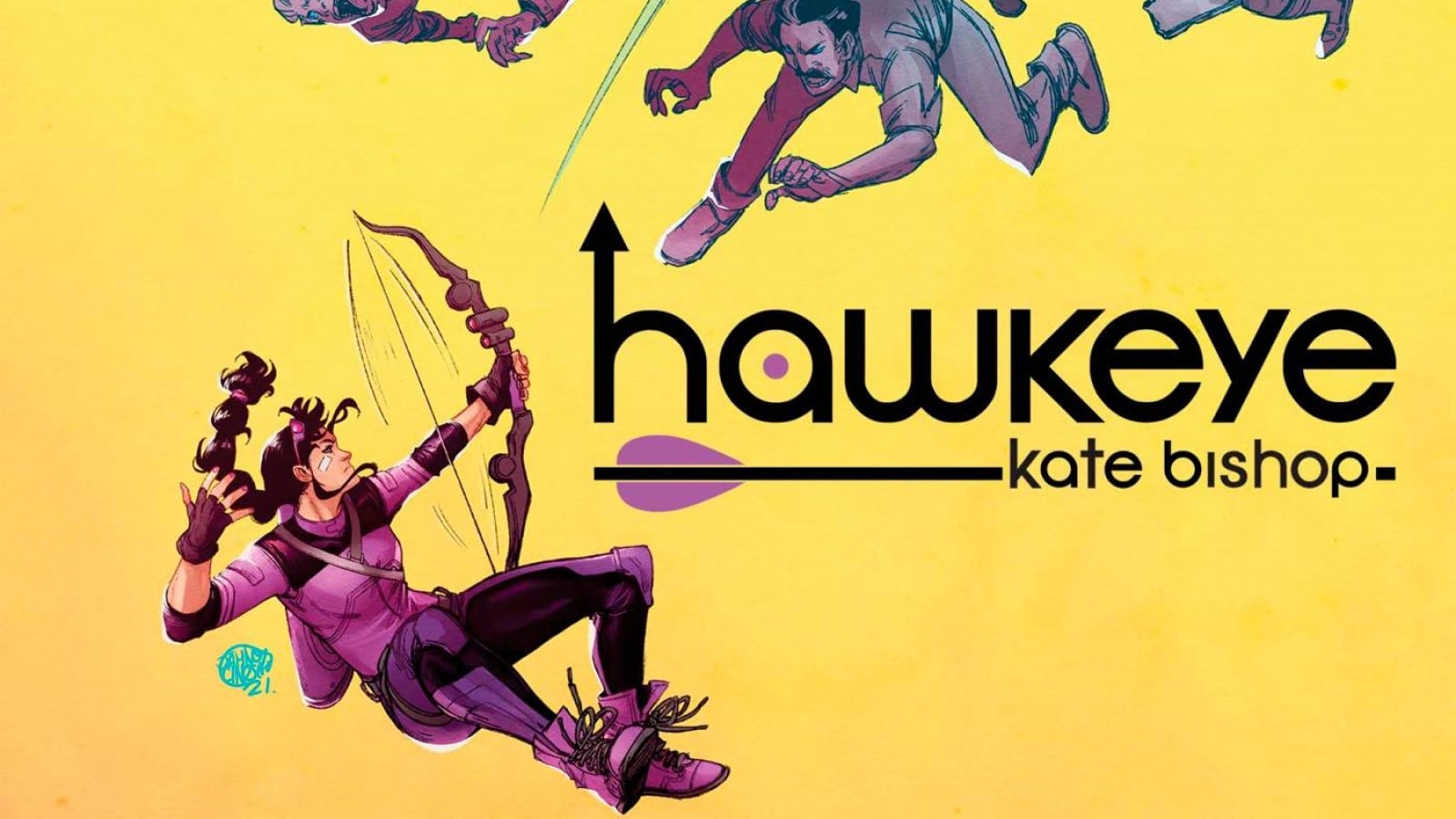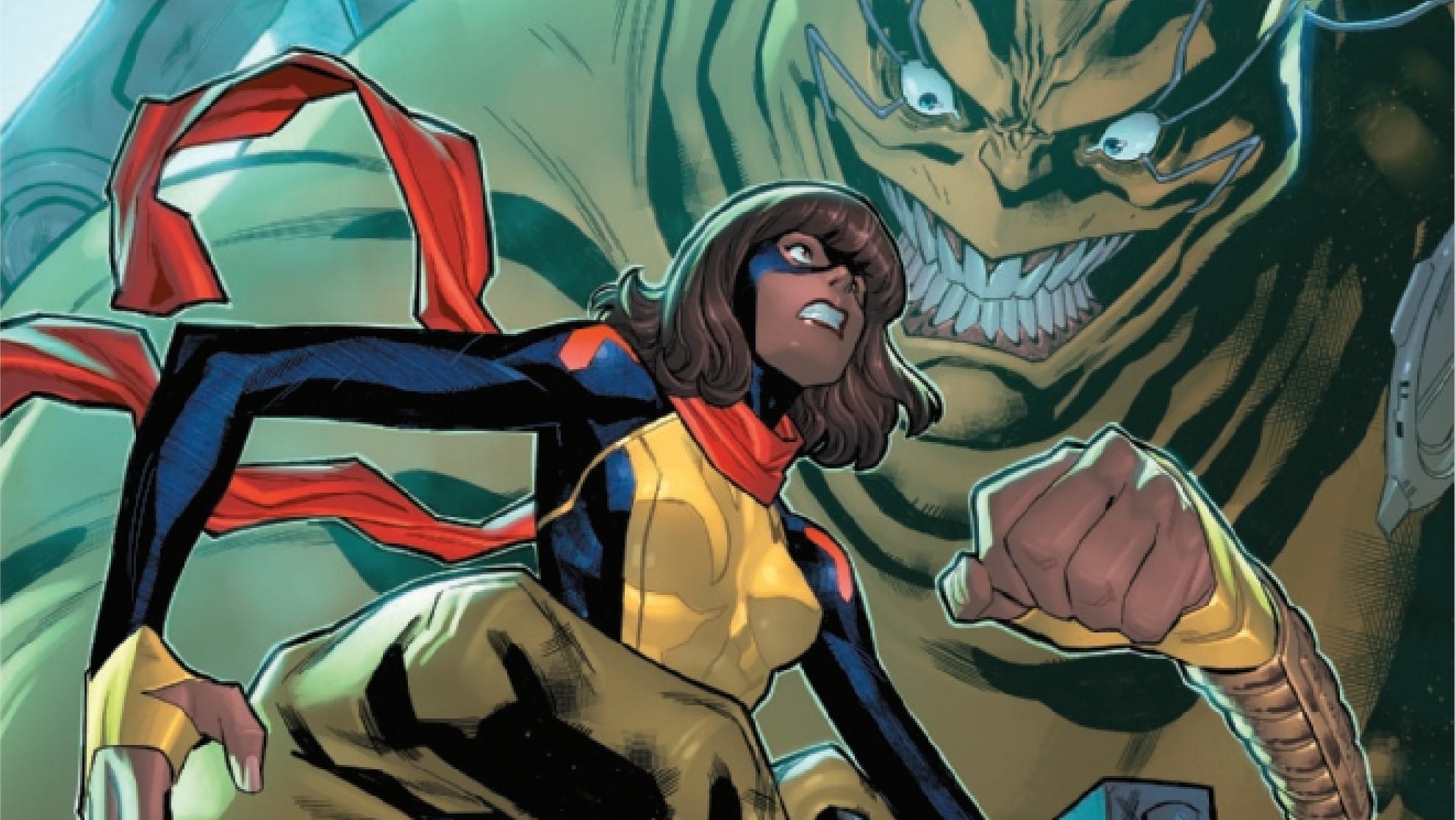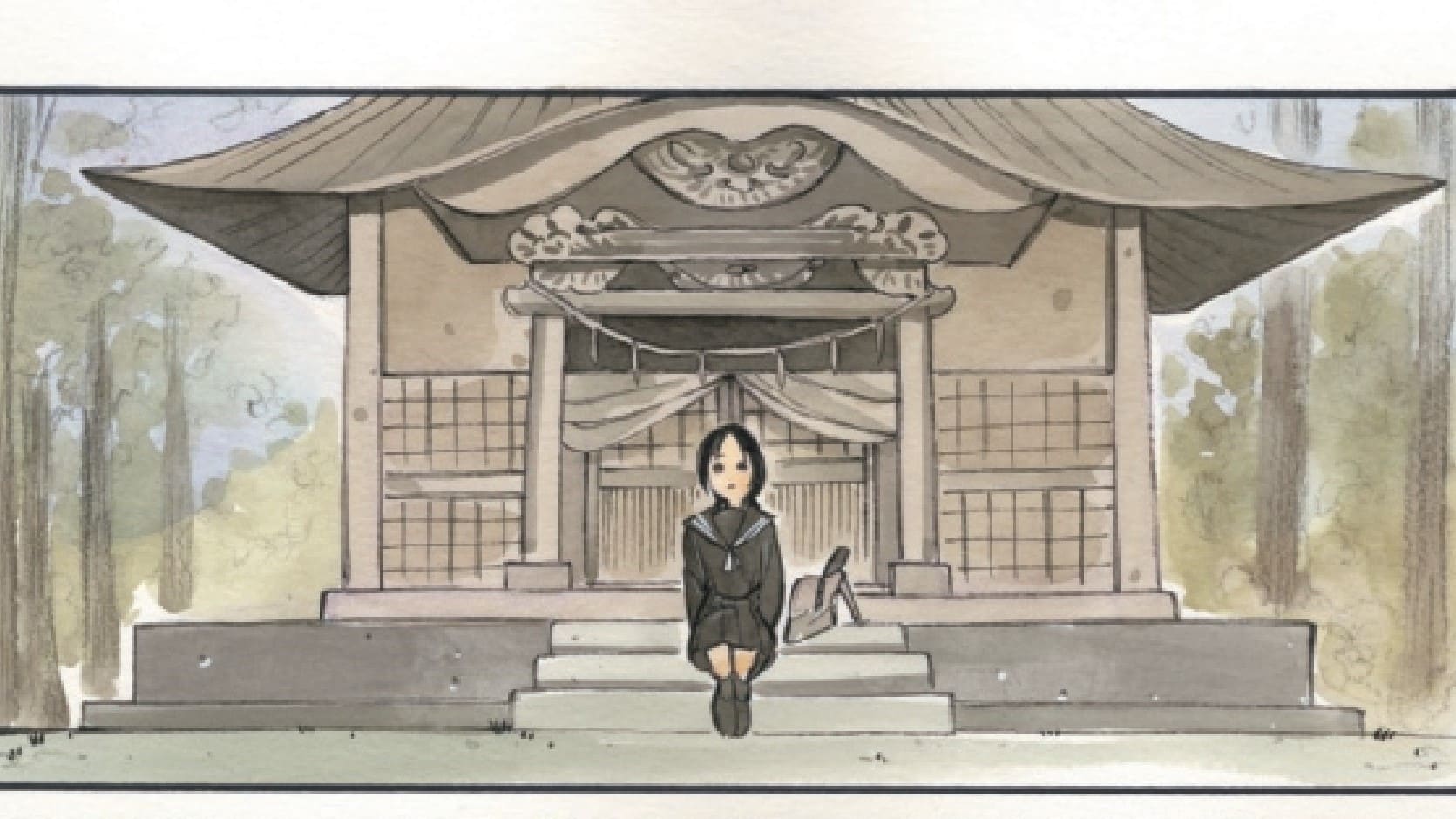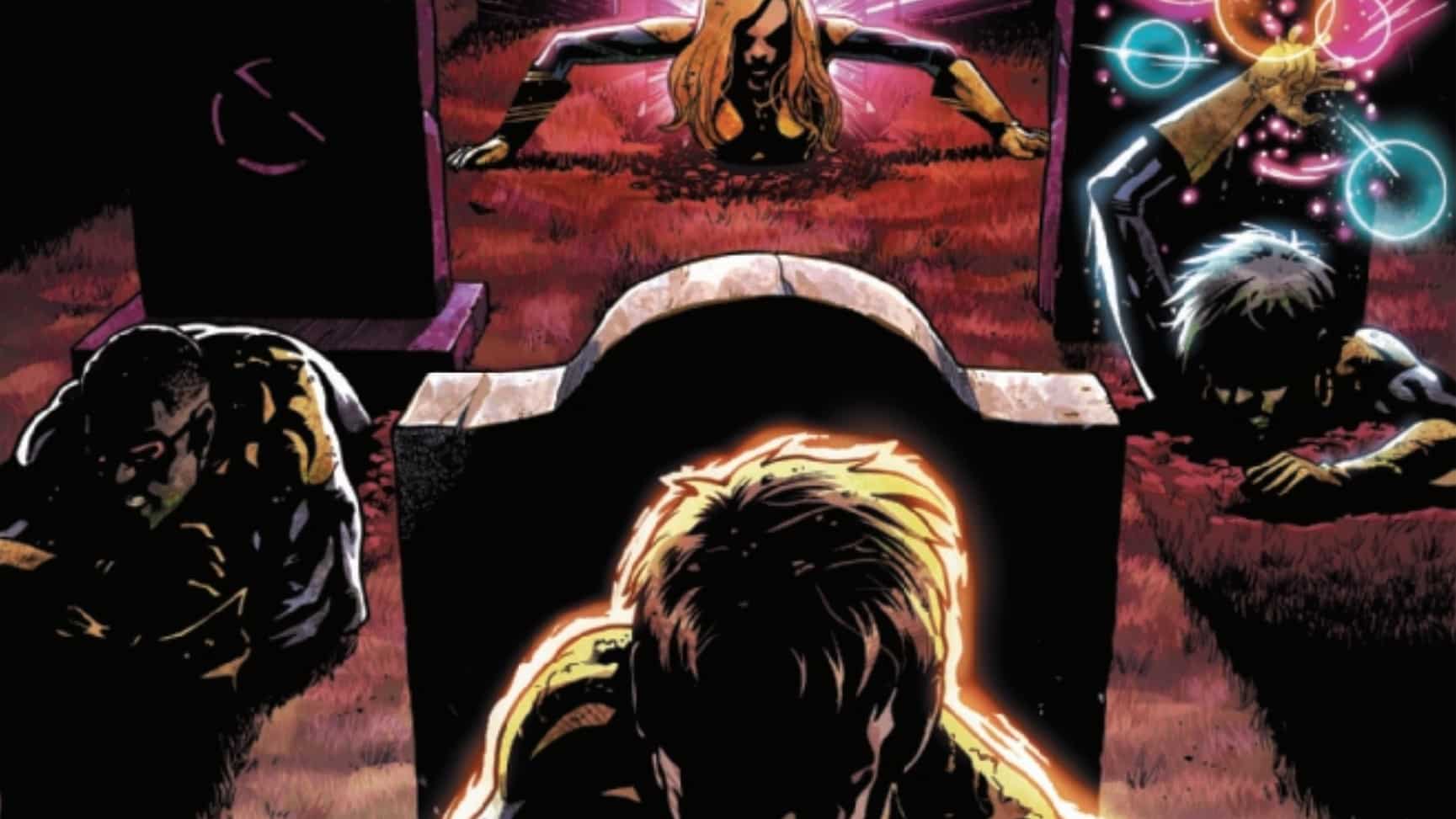Kate wants to trust and support and save her older sister (who may not be worth saving), while the Circus of Crime wants the macguffin and the arrows fly in Hawkeye: Kate Bishop #3, written by Marieke Nijkamp, drawn by Enid Balám, inked by Oren Junior, colored by Brittany Peer and lettered by Joe Caramagna.
I’ve figured out what’s so frustrating about this perfectly fine, low-stakes (for a superhero story) adventure comic book about one of my favorite, and one of Marvel’s most joyful, heroes: She’s supposed to be fun when she’s talking and serious when she’s stalking, and in the resort chateau/Hamptons getaway/villain mind-control trap where Marieke Nijkamp has set this series, our violent violet has basically no one capable of holding their own in a conversation. Where other Hawkeye series considered found family (Clint and Kate, America and Kate, the L.A. Scooby Gang and Kate, the West Coast Avengers and Kate), this one’s about the people you get stuck with because you happen to share lots of genes. They are, alas, not half as much fun.
Weapons of Last Resort

As this issue opens, Kate has discovered that the Resort Chapiteau — where her sister Susan has invited her to stay, under shaky pretenses — is temporarily full of “shady mind-controlled guests” out to capture Kate or take her down. Our Hawkeye ain’t gonna let that happen.
Combat ensues: fun, multi-page, high-energy, slightly goofy, archery-based twilight outdoor combat. Hawkeye combat scenes make unusual demands on artists, since everything has to be physical and acrobatic, with no energy blasts or reality warps or Kirby dots in sight. The bodies have to move and leap off the page, and the arrows have to persuade the reader that the page has a third dimension.
Balám and Junior’s off-center layouts and speedy, slightly unsteady line work nail it: The fights fit the script and the mood. Kate takes out a drone. Kate sees everybody at the outdoor party with those purple target circles that identify tactics and ranges and threats. Kate cartwheels! Kate shmoops up an especially dangerous guest with an arrow that explodes into shmoopy glue-goo. Then Kate uses a rope arrow to lift herself and her sister and Lucky the dog, who loves everyone (“Love all, lick all” is apparently Lucky’s motto), to safety. Balám and Junior excel with Lucky, who appears in every Kate Bishop comic: He really is the best dog.
Of course Kate wins her battle with mind-controlled guests (who are literally redshirts). Then Susan explains why she really invited her younger sister on this one-star vacation. Somewhere in this Evil Martha Stewart-style mansion is Susan’s lost ring, which comes with (wait for it) the key to a vault that (wait for it) Kate and Susan’s nefarious father controlled (of course), which (wait for it) holds a fragment of the Cosmic Cube.
“If they get their hands on it, will you be able to stop them?” Susan asks, to which Kate answers “I don’t know.”
Possession is Nine-Tenths of the Law

Who are “they”? They’re the Circus of Crime, the visually compelling baddies who go all the way back to a 1941 issue of Captain America but whom 21st century readers more likely remember from the famous Hawkeye run by Fraction and Aja. They’re famous for “hypnotizing you and stealing your jewelry and your agency,” as Kate puts it, as well as for changing their names, and sometimes their Big Boss: Elegantly conceived monochrome panels show new circus honcho Pascale Thibolt, cufflink and long scary fingernail after cufflink and long scary fingernail, keeping track of the mansion’s action. Apparently she already has Susan’s ring! They don’t call her the Ringmaster for nothing. (I’ll show myself out.)
Kate knows the circus is running the resort, and zombifying the guests, but hasn’t encountered the ring, or the closed-circuit security TV, or the Ringmaster yet: They’re in the basement, and before Kate comes down to find them, Nijkamp offers much more of Kate and Susan’s … not banter; not plans; not catching up; what to call this predictable and unsatisfying nearly-five page conversation?
Kate wants Susan to leave for her own safety. Susan does not want to leave. Each sister wants to protect the other, just like they tried to do years ago, when Kate was little and their dad was physically and emotionally abusive. Mr. Bishop wasn’t just a jerk to them: He became a white-collar criminal and then a violent killer who shot some dude in a suit for a slice of the cube, which Susan in turn stole and hid.
“It took me a long time to realize how dangerous Dad was,” Susan tells her little sister over a page whose panels are flashbacks. “I know you thought I left you alone with him when you were little. I’m sorry. No one should have to be alone with him.”
I’m tired of the way that Kate Bishop’s villains always lead back to her mom or her dad. But not half as tired as Kate must be.
Everybody Take a Bow

Deep in the chateau, below a painted clown, Kate fights Fifi the acrobat and human pincushion: Five arrows emanate, fletchings first, from her pink hair (or pink wig). Again, the fight becomes a delight to watch, and Nijkamp’s Hawkeye knows how to quip: The Resort Chapiteau suffers, Kate tells Fifi, from a “lack of frozen peas.” And just when Kate gets the upper hand over Fifi, third-generation Ringmaster Thibolt shows up with a re-mind-controlled Susan at her side. How will our indigo investigator finesse the coming fracas? Stay tuned for Hawkeye #4!
Or don’t. Nijkamp’s Hawkeye is fun, but it hasn’t changed the title character much, so far, and the art is an uneven ride. When the beats are conversation rather than combat, the characters all look asymmetrical, freehand-drawn, less like most cape comics’ faces and bodies than like old newspaper strips or Posy Simmonds on a bad day. Kate Bishop comics shouldn’t look like Spider-Man comics! And sometimes they should look like romance comics! But Balám and Junior only sometimes pull it off. As for the quippy Kelly Thompson Hawkeye that many of us has come to love, she’s mostly talking to herself: Kate’s on her own, with no teammates, no mentors, no friends and no one except suspects, a very suss Susan and her high-volume interior monologue, rendered in purple text boxes, and plenty of them.
At least Kate brought her cellular telephone. The world may little note nor long remember what kicks were rendered and punches were thrown here, but it should surely take note of how Kate texts her besties, Clint “Other Hawkeye” Barton, Cassie Lang and America Chavez from Young Avengers. The texts sparkle. The jokes land. Everyone deserves such good friends. Maybe they’ll show up next issue. A girl can dream.
Stephanie Burt is Professor of English at Harvard. Her podcast about superhero role playing games is Team-Up Moves, with Fiona Hopkins; her latest book of poems is We Are Mermaids. Her nose still hurts from that thing with the gate.






